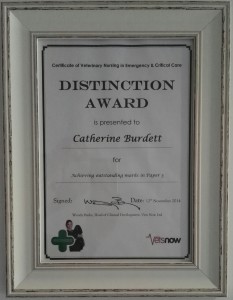For 2016’s veterinary nursing awareness month, we will be trying to provide everyone with an insight into just how varied and important a veterinary nurse’s roles and responsibilities are; how much training they have to do, the additional qualifications they take and the unexpected roles they play. Generally prove that our nurses are not ‘just nurses!’
As a vet, I can honestly say that within a vet’s day to day working routine we would be lost without the help and support of our nurses! We feel raising awareness therefore of their role in the veterinary practice is really important and to kick start VNAM we are going to detail why our nurses at Hollybank Veterinary centre are so helpful to us as vets!
Why vets need nurses
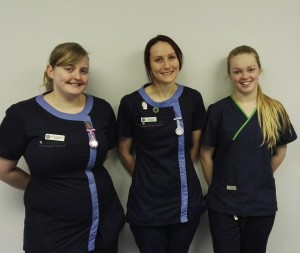 >There are many scenarios where I need an extra set of hands, sometimes three sets! Patient restraint is really important and nurses are invaluable in holding pets for me and do so in a comforting but safe way, often learning less is more.
>There are many scenarios where I need an extra set of hands, sometimes three sets! Patient restraint is really important and nurses are invaluable in holding pets for me and do so in a comforting but safe way, often learning less is more.
>In a busy day full of appointments some of my patients may have samples taken. Our nurses will then process these samples for us; this can involve using machines in-house or packaging them up for specific laboratories. It is important samples go to the right place on time and nurses are the right people to make sure this happens!
>Each surgery or dental we perform is assigned a vet and a minimum of one nurse. Nurses have the huge responsibility of monitoring the anaesthetic and often have multiple things to do at once-they invented multi-tasking! They prepare the patient, attach monitoring equipment, monitor the vital parameters, help dress the surgeon, open the surgical kit and the list continues. Without them taking on this responsibility we would be unable to perform the number of surgeries we do in one day.
>Nurses are in charge of our inpatient care. Hospitalised patients have regular checks, medications and are taken outside to toilet. The nurses get to know inpatients really well during their stay and can be very intuitive. Even the subtle changes such as ‘he isn’t as happy today’ are invaluable to us as vets and their clinical knowledge and judgement often helps guide our treatment plans.
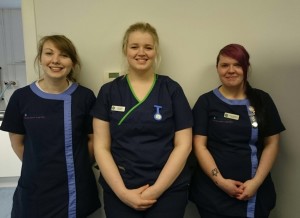 >They CLEAN! Vets are notorious amongst nurses for being messy! In our defence, we try our hardest! However, our nurses ensure that the practice is kept neat, tidy and meticulously clean. This isn’t just aesthetically pleasing but it is important that everything is where it is meant to be should an emergency arise and ensures that where we work is kept to a high standard of hygiene for our patients.
>They CLEAN! Vets are notorious amongst nurses for being messy! In our defence, we try our hardest! However, our nurses ensure that the practice is kept neat, tidy and meticulously clean. This isn’t just aesthetically pleasing but it is important that everything is where it is meant to be should an emergency arise and ensures that where we work is kept to a high standard of hygiene for our patients.
>They support vets not only physically but mentally and emotionally! This can range from dispensing medications we have prescribed, taking x-rays for us, calculating doses of drugs to checking that we are okay after that particularly sad case or long night on call.
>Last of all, they CARE. They care about your pets and they care about their safety and well being. For that, we are most grateful. There are many more roles they play so keep watching for our weekly posts!
Nurse Training..How, When and Why?
There are two routes to becoming a veterinary nurse.
- One route is to go to college and gain a diploma in veterinary nursing. This involves attending college one or two days a week to learn the theory and spend the rest of the week working in a training practice.
- The other route into veterinary nursing is to study for a degree at university. There are two options within the degree route, foundation or honours. Within this course there are blocks of placement where you spend time away from university working as a full time student veterinary nurse at an RCVS accredited practice.
Training practices must pass a thorough inspection by a college or university to be able to employ and train student veterinary nurses and are re-inspected on an annual basis.
Both courses have strict entry requirements and ongoing assessments through exams and assignments. Along with academic exams, student veterinary nurses also have to complete a Nursing Progress Log (NPL) which is a list of hundreds of tasks from administering injections to restraining dogs and cats for veterinary examination. The NPL is based on a list of “day one” clinical skills. These are the essential skills that student nurses must have mastered in order to register as a qualified veterinary nurse with the Royal College of Veterinary Surgeons (RCVS). A student nurse is allocated a clinical coach (a vet or a qualified nurse) who oversees the student and guides them throughout their training and helps them with completing their NPL.
Additional to the NPL and academic exams, student nurses also have to pass practical examinations, Objective Structured Clinical Examinations (OSCE’s). After NPL completion at their college or university student nurses must sit 12 OSCE’s and pass a minimum of 8 stations. These exams consist of stations which must each be completed in 6 minutes. Each station contains ‘key points’ that must be completed as these relate to points of safety. The student not only has to pass each station but also correctly achieve all of the key steps in the correct order. An example of an OSCE is ‘A cat has had surgery to repair a fractured jaw and requires tube feeding.’. The student would then have to work out the cat’s daily nutritional requirement, as well as preparing and administering the food to the patient safely.
Once student nurses have finished their courses, passed their assignments and both theory and practical exams they can then join the register of veterinary nurses. They then have to keep their knowledge up to date by completing Continuing Professional Development (CPD).
Meet our Student Nurses…
Here at Hollybank we are able to act as one of these training practices. We currently have two student nurses who are being helped by our clinical coaches to complete their NPL.
Amy
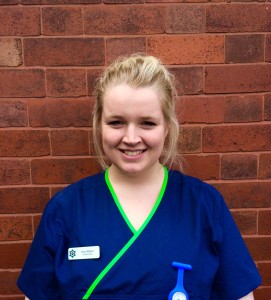 Since I was little I wanted to have a career with animals. I started studying to become a Veterinary Surgeon but unfortunately my grades were not good enough. This is when I started to look into what a veterinary nurse does and I was surprised at how involved they were with the care of animals at the veterinary practice and also all the other jobs they did. I had no idea that veterinary nurses helped to take X-rays and also helped in surgeries as an anaesthetist or scrubbing in to help the surgeon. After all this research I decided that becoming a Veterinary Nurse is what I wanted to do as my career.
Since I was little I wanted to have a career with animals. I started studying to become a Veterinary Surgeon but unfortunately my grades were not good enough. This is when I started to look into what a veterinary nurse does and I was surprised at how involved they were with the care of animals at the veterinary practice and also all the other jobs they did. I had no idea that veterinary nurses helped to take X-rays and also helped in surgeries as an anaesthetist or scrubbing in to help the surgeon. After all this research I decided that becoming a Veterinary Nurse is what I wanted to do as my career.
The route I have chosen to take is to study Veterinary Nursing and Practice Management BSc at Harper Adams University. Within this course the main placement is in a sandwich year, this is where you spend a whole year away from university working in a practice. I chose to do the Honours degree course as I wanted the experience of going to university and I personally like to learn a lot more theory before I go and do any practical tasks. I feel that it is good that there are two routes to become a Veterinary nurse because it helps to cater for all learning styles and educational backgrounds.
Hollybank has been a great place to do my sandwich year so far as the staff are very helpful and really driven to help you learn.
Izzie
 I started studying the foundation course at Harper Adams University in September 2014 and I’ve been offered my sandwich year placement here at Hollybank.
I started studying the foundation course at Harper Adams University in September 2014 and I’ve been offered my sandwich year placement here at Hollybank.
Spending my childhood outside saving frogs in the garden or at the stables riding horses was always so much better than being inside. I’ve never considered a career where I wouldn’t work primarily with animals, so studying to be a veterinary nurse is more of a dream than a job to me. I’m the first person in my family who’s had the opportunity to go to university, so I chose to apply to Harper as I enjoy learning about animals just as much as I do spending time with them. I’ve studied modules including medical nursing, where I’ve learnt the correct nutritional requirements for animals throughout their life stages, and a module in diagnostic imaging, which involved learning how to position animals for x-rays.
I chose the university pathway over the diploma as I had always wanted to go to university but didn’t realise vet nursing could be studied as a degree until I started searching for animal based courses. As I enjoy the theory based side just as much as the practical I feel that it is better suited to me. I will have the opportunity to top up my foundation degree to a BSc honours at the end of my 3 year course if I get above 55% overall academically.
Continuing professional development (CPD) and further qualifications
After qualifying as Registered Veterinary Nurses (RVNs), it is important to maintain our professional knowledge and skills through Continuing Professional Development, known as CPD. RVNs are required to do a minimum of 45 hours of CPD over a three-year period, averaging around 15 hours per year. This can take the form of lectures, webinars and training courses to name a few.
With such a wide range of topics to choose from, it is a good idea to focus our learning on particular areas of interest, which could include physiotherapy, emergency nursing or canine/feline behaviour.Focussing on such areas allows us to develop our knowledge and understanding to a higher level, often gaining additional qualifications in the process.
Some of those courses include:
Clinical coaching– This allows nurses to become a mentor for student nurses undergoing their training. This one-day course covers the skills and information needed to support a student throughout the training process. Clinical coaches are responsible for signing off tasks in the students nursing progress log when they feel the student has reached competency.
Vets Now Emergency and Critical Care Certificate– This is an 18-month long distance-learning course that allows nurses to expand their knowledge of emergency and critical care. This enables them to react appropriately when faced with a wide range of emergencies and provide the best care to the patient. Some of the topics covered include monitoring critical patients, cardiovascular emergencies and gastrointestinal emergencies. A series of assignments must be completed, followed by three further written assessments. Following completion of this the nurse is entitled to use the post-nominals CertVNECC, indicating that they have successfully completed the certificate.
Diploma in advanced veterinary nursing- This modular diploma comprises of core and option modules, allowing nurses to focus on particular study areas, including medical and surgical nursing, intensive care, diagnostic imaging and anaesthetic nursing. As part of the diploma, participants must also complete in-depth study in a subject of their choice, allowing them to focus on their particular interests.
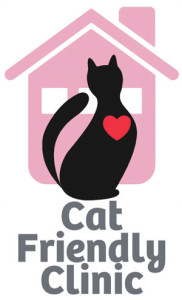 ISFM Certificate/Diploma in Feline Nursing- Cats can be more challenging patients than dogs, and the courses allow nurses to understand feline behaviour, health and welfare, and how to provide a higher standard of care to the cats we treat. As part of the training, participants learn how to make the practice a ‘cat friendly clinic’ which reduces stress in our feline patients. Hollybank is a cat friendly clinic, which involves things such as separate cat wards, specialised equipment and handling techniques.
ISFM Certificate/Diploma in Feline Nursing- Cats can be more challenging patients than dogs, and the courses allow nurses to understand feline behaviour, health and welfare, and how to provide a higher standard of care to the cats we treat. As part of the training, participants learn how to make the practice a ‘cat friendly clinic’ which reduces stress in our feline patients. Hollybank is a cat friendly clinic, which involves things such as separate cat wards, specialised equipment and handling techniques.
This is just a brief overview of the opportunities available to veterinary nurses; a wide range of CPD subjects are available, and CPD can be tailored to individual interests. Whatever the subject matter, nurses are required to keep up to date, and learning never ends!
The nurse’s role in physiotherapy
Physiotherapy can be used in Veterinary practice in conjunction with traditional treatment. The aim of physiotherapy is to help manage pain and restore movement and function to patients who are affected by illness, injury or disability.
There are many different techniques used ranging from massage, stretching, therapeutic exercises and hot/cold therapy to acupuncture, electrostimulation and hydrotherapy. Not all of these techniques will be appropriate for every patient which is why it is important to assess each patient individually. When assessing a patient there are many things to consider before an effective plan for that individual can be created. The type of injury or disease process must be considered as well as the age of the patient, body condition, home environment and pre injury activity level.
Once the patient has been assessed a multimodal approach will be used, meaning more than one technique will be utilised. For example both massage and heat therapy on an arthritic dog should improve mobility and ease pain when used alongside traditional medicine. Animals are referred for physiotherapy because their tissues are already damaged therefore it is essential to choose techniques which are appropriate for the stage of healing and each technique is introduced at the correct intensity in order to restore function without causing harm. A few conditions that benefit from correctly planned and applied physiotherapy are; muscle wastage, osteoarthritis, hip and elbow dysplasia and chronic inflammation.
So, where does the Veterinary Nurse come in?
Once a patient has been diagnosed by the Veterinary Surgeon they may be referred to a Veterinary Nurse for physiotherapy. The Veterinary Nurse will assess the patient themselves and create an individual physiotherapy plan. Veterinary nurses are able to work closely with the patient and owner, demonstrating how to carry out techniques effectively and providing a plan for the owner to carry out at home. Whilst of course, being there to support both owner and patient through the physiotherapy process.
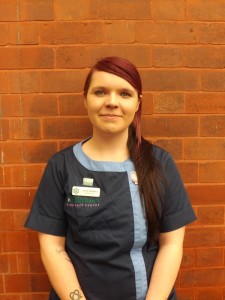 Veterinary nurses are able to undertake physiotherapy CPD to further their knowledge on the subject. As I have a particular interest in physiotherapy I am currently undertaking the BSAVA Rehabilitation and Physiotherapy Vet Nurse Merit Award. To complete the course I have attended 3 lecture days, viewed webinars and will have to complete an online assessment and case study by June and August. Once the course has finished I will have a more in depth knowledge on physiotherapy and how to use it effectively.
Veterinary nurses are able to undertake physiotherapy CPD to further their knowledge on the subject. As I have a particular interest in physiotherapy I am currently undertaking the BSAVA Rehabilitation and Physiotherapy Vet Nurse Merit Award. To complete the course I have attended 3 lecture days, viewed webinars and will have to complete an online assessment and case study by June and August. Once the course has finished I will have a more in depth knowledge on physiotherapy and how to use it effectively.
Life in the role of a nurse and Dexter’s brave story
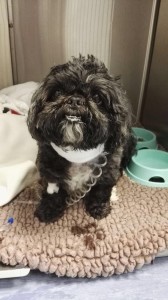 Dexter is a 6 year old Shih Tzu that has been a regular guest at Hollybank recently. He was primarily admitted for hospitalisation due to urinary problems. This involved intermittent signs of straining to urinate.
Dexter is a 6 year old Shih Tzu that has been a regular guest at Hollybank recently. He was primarily admitted for hospitalisation due to urinary problems. This involved intermittent signs of straining to urinate.
After further investigations on his urine, a particular type of urinary crystal was detected. This led us to arrange an ultrasound scan with our visiting diagnostic imaging specialist, Jerry Shimali. Dexter was diagnosed with a portosystemic shunt (PSS). A PSS, also known as a liver shunt, is a blood vessel that carries blood around the liver instead of through it. Normally, blood passing through the liver carries broken down food and materials which are either stored for energy, processed into safe chemicals or made into proteins and other substances. Therefore, when the blood bypasses the liver it cannot perform the role it is meant to and toxins can build up in the bloodstream or kidneys.
In Dexter’s case, the build-up of toxins in his kidneys caused crystals in his urine. The crystals can also be associated with urinary tract infection and inflammation. These factors were likely all contributing to Dexter’s difficulty to urinate. In certain cases, portosystemic shunts can be managed medically. However, as Dexter’s condition was causing him an issue he was considered to be a surgical candidate. PSS surgery is a complex and specialist procedure. Here at Hollybank veterinary centre, we are lucky to work with Catherine Sturgeon, a specialist in veterinary soft tissue surgery. Catherine came in to meet Dexter and his owner; she was able to examine him herself and discuss the surgery and post-operative care in detail. A date was planned for the surgery to go ahead, taking into account that we had a full nursing team to assist.
On the morning of Dexter’s surgery, the ‘overnight nurse’ set up the operating theatre ready for his procedure. This must include the appropriate breathing system, skin preparation materials and all the equipment needed to anaesthetise him and monitor his anaesthetic. The equipment is checked carefully to ensure it is in full working order. As Catherine is a specialist surgeon she brings her own surgical instruments. However, for complex surgeries such as this one it is important that we also prepare any extra equipment that she may need so that is is quick to hand if required.
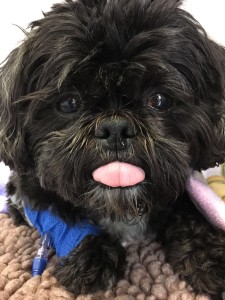 Dexter arrived for his admit appointment. Sarah, the vet involved in Dexter’s care admitted him for his surgery and brought him into out kennel area. The nurses got him settled in his bed and carried out his pre-operative checks. Nurses carry out pre-operative checks on all patients planned to have a procedure or surgery. The checks include temperature, heart rate and respiration rate. We also check their gums to make sure they are pink and moist; this indicates if they are hydrated and have good circulation. If we are worried about anything in our checks then we will inform the vet. Dexter’s checks were all in the normal ranges. Sarah also carried out a full physical examination on Dexter. She prepared his pre-anaesthetic medications and pre-emptive pain relief injections. Nurses can then administer these medications. Dexter’s pre-medication made him sleepy and relaxed so the nurses were able to place his intravenous catheter without causing him any stress.
Dexter arrived for his admit appointment. Sarah, the vet involved in Dexter’s care admitted him for his surgery and brought him into out kennel area. The nurses got him settled in his bed and carried out his pre-operative checks. Nurses carry out pre-operative checks on all patients planned to have a procedure or surgery. The checks include temperature, heart rate and respiration rate. We also check their gums to make sure they are pink and moist; this indicates if they are hydrated and have good circulation. If we are worried about anything in our checks then we will inform the vet. Dexter’s checks were all in the normal ranges. Sarah also carried out a full physical examination on Dexter. She prepared his pre-anaesthetic medications and pre-emptive pain relief injections. Nurses can then administer these medications. Dexter’s pre-medication made him sleepy and relaxed so the nurses were able to place his intravenous catheter without causing him any stress.
The nurse assigned to Dexter’s surgery repeated the checks on the equipment in theatre; this is standard procedure and acts as another check point to ensure we have everything ready. Once she was happy she brought him into the preparation area ready to be anaesthetised. Dexter was still sleepy from his pre-medication so his anaesthetic induction went smoothly. Once he was asleep the nurse attached all of the necessary monitoring equipment. Her role was then to record each manual and mechanical reading every five minutes. It is the nurse’s responsibility to inform the vet if there are any abnormalities in their readings. It is also the nurse’s job to clip and prepare the surgical area in a sterile manner.
For the PSS to be corrected surgically Catherine had to find the abnormal blood vessel and close it off. This would force the blood to flow back through the liver. However, suddenly forcing the blood back through the liver has the potential to cause problems. The liver can become overwhelmed with this sudden change in dynamics. Furthermore, the blood vessels the blood is meant to travel through can be poorly developed (through lack of use) and sometimes they may not open up quickly enough for the blood to pass through.
To avoid complication, Catherine placed an ameroid constrictor around the vessel. This specialist instrument works to slowly close off the shunt allowing the liver time to adapt to the changes. Due to the slow closure of the blood vessel Dexter needed to stay in the hospital for a minimum of five days. This was so that he could be closely monitored for the development of any complications. All of the nurses within the hospital were aware of these signs and during his stay ensured they were vigilant in looking out for them.
 As Dexter required hospitalisation for a longer period of time, a jugular catheter was placed at the beginning of his surgery. This type of catheter can be kept in place for longer than placing a catheter in his leg where we would routinely place them. We used his jugular catheter for his post-operative fluids. It also meant we had constant intravenous access in case we needed to administer any emergency medications.
As Dexter required hospitalisation for a longer period of time, a jugular catheter was placed at the beginning of his surgery. This type of catheter can be kept in place for longer than placing a catheter in his leg where we would routinely place them. We used his jugular catheter for his post-operative fluids. It also meant we had constant intravenous access in case we needed to administer any emergency medications.
Whilst Dexter was waking up from his anaesthetic the nurse ensured he was kept warm in our recovery area. We wrapped him up in blankets and used the Bair Hugger; this blows hot air into a blanket which is placed around the patient. Once he was awake enough, he was returned to his kennel which had been padded with extra blankets to ensure he was comfortable and warm. A nurse then sat with him for a few hours to make sure he was recovering well; this constant supervision in the early stages meant a problem could be identified and treated as quickly as possible. Dexter recovered well over the day and was already nice and bright by the next morning!
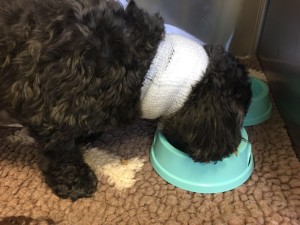 For the first 48 hours of Dexter’s stay he was checked by a nurse every two hours. One of the most problematic complications related to PSS surgery are post-operative seizures. The nurses monitored him closely for any signs of this and a seizure protocol was put into place should they occur. At each check his heart rate, respiration rate, temperature and demeanour were recorded. Due to Dexter having urinary problems it was still important to monitor his urination so the nurse also took note of how he was toileting. Dexter required ongoing medical and nutritional treatment after his surgery. He continued his fluids until he was eating and drinking well therefore these needed ongoing care and monitoring; his jugular catheter was checked regularly and the bandage replaced daily. We ensured he got all of his medications on time and monitored his wound to check it was clean and comfortable. Lastly, we calculated the correct amount of food he should be having at each meal and encouraged him to eat with us.
For the first 48 hours of Dexter’s stay he was checked by a nurse every two hours. One of the most problematic complications related to PSS surgery are post-operative seizures. The nurses monitored him closely for any signs of this and a seizure protocol was put into place should they occur. At each check his heart rate, respiration rate, temperature and demeanour were recorded. Due to Dexter having urinary problems it was still important to monitor his urination so the nurse also took note of how he was toileting. Dexter required ongoing medical and nutritional treatment after his surgery. He continued his fluids until he was eating and drinking well therefore these needed ongoing care and monitoring; his jugular catheter was checked regularly and the bandage replaced daily. We ensured he got all of his medications on time and monitored his wound to check it was clean and comfortable. Lastly, we calculated the correct amount of food he should be having at each meal and encouraged him to eat with us.
All of the nursing team got to know Dexter and his cheeky ways really well. Creating bonds with our patients is very rewarding for us, especially when you see them getting better. Getting to know each pet individually also means we notice if they “are not quite right”, no matter how small the change. Dexter was in the hospital for five days following his surgery, he was very well behaved when he needed things doing with him and he loved lots of fuss and attention. Cuddles are one of the bonuses of being a nurse!
Dexter was very happy to see his mum when she came to collect him. Sarah went through post-operative care and the signs to look out for whilst he was at home. A post-operative check appointment was booked for a week later to assess his wound and progress. During that time Dexter came to stay with us for one more night; he was quiet and showing signs of an upset stomach at home, he was observed carefully overnight and by morning he was bright and allowed to go home. When he came back for his post-operative check he was doing really well at home and had been his usual happy self, playing with his sister Chloe. Dexter is on the road to recovery and we all look forward to seeing his little face again!

